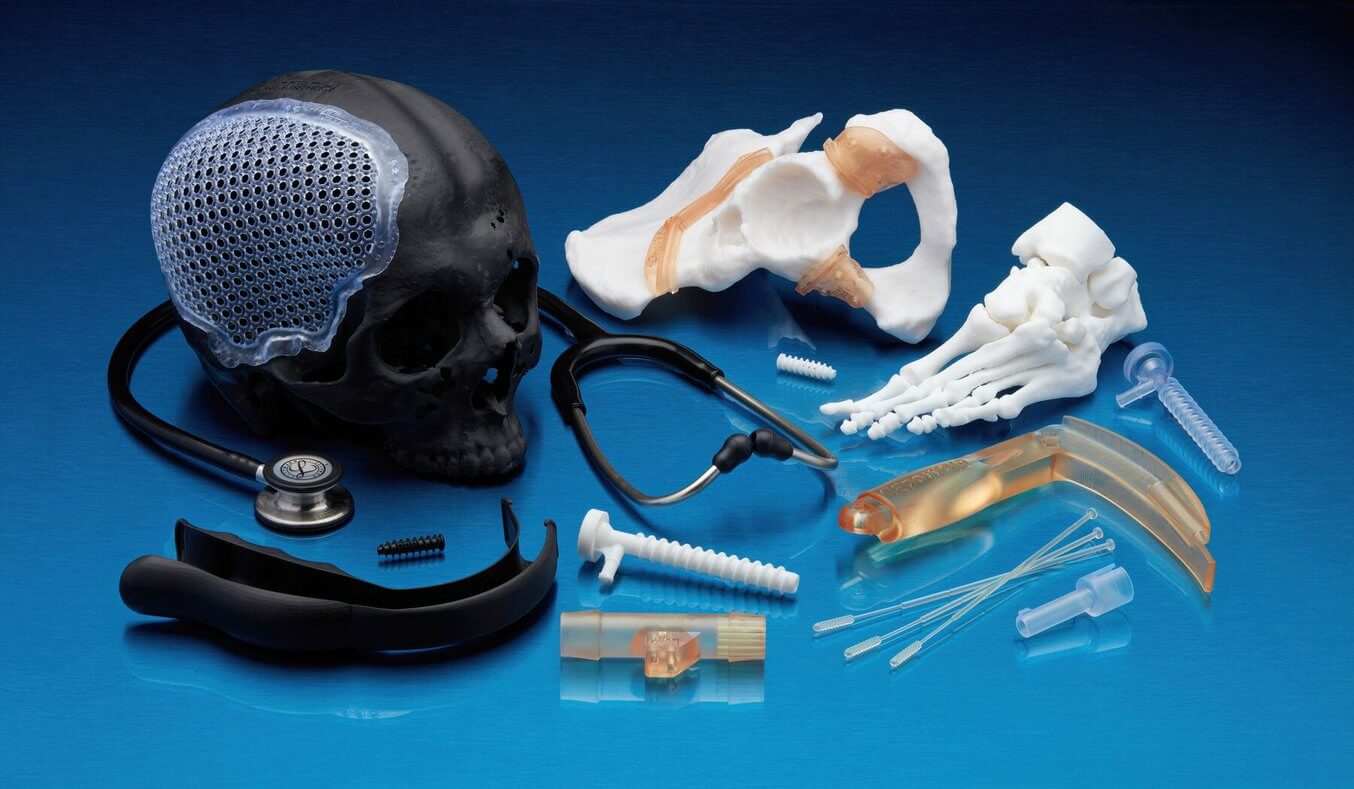Digital Transformation for Healthcare Technology Trends
Digital transformation is revolutionizing various industries, and healthcare is no exception. The integration of advanced technologies such as Internet of Medical Things (IoMT), 3D Printing, Telehealth,… into healthcare practices is redefining the landscape of medical care. These innovations are collectively referred to as “Healthcare Technology Trends” and are driving significant improvements in patient care, operational efficiency, and overall healthcare outcomes. Now, let’s explore highlights the prominent technology trends that are shaping the future of this critical sector.
The Importance of Digital Transformation in Healthcare
Digital transformation in healthcare is not merely a trend but an urgent necessity in the modern context. With the rapid advancement of technology, embracing healthcare technology trends brings numerous significant benefits. Such as improving operational efficiency, reducing costs, enhancing service quality, and improving patient experience.
One of the biggest advantages of digital transformation is the increased accessibility to information and healthcare services. Electronic Health Record (EHR) systems help store and access patient information quickly and accurately, thereby assisting doctors in diagnosing and treating more effectively.

Moreover, digital transformation also optimizes the management and operation processes of healthcare facilities. Automation systems and Artificial Intelligence (AI) can analyze large datasets to make strategic decisions, thereby minimizing operational costs and enhancing work efficiency. For example, AI applications in drug inventory management help forecast usage needs and optimize inventory levels, avoiding shortages or overstock situations. Incorporating healthcare technology trends ensures that healthcare providers stay ahead in the ever-evolving landscape, leading to better patient outcomes and a more efficient healthcare system.
Healthcare Technology Trends: Prominent Innovations in the Industry
Artificial Intelligence in Diagnosis and Medical Record Management
AI has been revolutionizing the diagnostic process through machine learning and deep learning algorithms. AI systems can analyze medical images such as X-rays, MRI, and CT scans quickly and accurately, aiding doctors in early detection of pathological signs. IMT has undertaken numerous projects in the healthcare sector. Contact IMT if you want to apply technology in this field. For instance, a study by Google Health demonstrated that AI could diagnose breast cancer from X-ray images with accuracy comparable to or even surpassing medical experts. This AI system can minimize diagnostic errors and assist in the early detection of tumors.
AI not only has diagnostic capabilities but also supports effective management of medical records and patient data. AI systems can automate data entry, classification, and analysis processes, reducing manual work and enhancing accuracy. IBM Watson Health has developed an AI system capable of analyzing electronic health records (EHR) to assist doctors in making treatment decisions. This system can synthesize information from multiple sources, including medical history, test results, and doctor’s notes, to provide a comprehensive overview of the patient’s condition.
Furthermore, AI helps predict patient health events, a key aspect of current healthcare technology trends. A study by the National Library of Medicine indicated that AI could predict the likelihood of a patient being readmitted within 30 days after discharge based on data from electronic health records. This enables doctors to take timely preventive measures, reducing risks and medical costs.

Internet of Medical Things (IoMT) in Remote Health Monitoring
The Internet of Medical Things (IoMT) is a significant component of the broader Healthcare Technology Trends. It involves connecting medical devices and sensors to networks for the collection, analysis, and transmission of medical data. IoMT offers substantial benefits to the healthcare industry, ranging from monitoring patient health conditions to optimizing care processes.
IoMT’s application in smart medical devices, such as blood pressure monitors, glucose meters, and heart rate monitors, has become increasingly prevalent. These devices not only assist patients in tracking their daily health conditions but also send real-time data to doctors and healthcare providers. For example, Abbott’s smart glucose meter, Freestyle Libre, enables diabetes patients to continuously monitor their glucose levels without the need for frequent finger pricks. This device transmits data to a mobile app, allowing patients and doctors to monitor and manage diabetes effectively.
Moreover, IoMT plays a crucial role in remote health monitoring, easing the burden on healthcare facilities and providing convenience for patients. Smart wearable devices like the Apple Watch track metrics such as heart rate, activity levels, and sleep, offering continuous and detailed data on the user’s health status.
In addition to health monitoring, IoMT optimizes patient care and management processes. Hospitals and clinics utilize IoMT systems to manage medical devices, ensuring that equipment is always available and functioning efficiently. For instance, medical device management systems using IoMT technology track and manage the operational status of devices, reducing downtime and unnecessary maintenance. These systems provide detailed information on the performance of each device, helping healthcare facilities manage resources more effectively. Incorporating IoMT into healthcare represents a transformative shift in Healthcare Technology Trends, significantly enhancing the efficiency and effectiveness of patient care.

Blockchain Applications in Pharmaceutical Management
Blockchain helps secure medical data by using encryption techniques to store information in interconnected blocks. Each block contains a timestamp and links to the previous block, forming an immutable chain. This ensures that medical data cannot be altered or tampered with, enhancing data integrity and security. For example, MedRec – a blockchain project developed by the Massachusetts Institute of Technology (MIT), uses blockchain to manage electronic medical records. MedRec allows patients to control access to their medical data and ensures that only authorized individuals can access this information.
In addition to securing medical records, blockchain is also used to manage the pharmaceutical supply chain, which is another key aspect of healthcare technology trends. By tracking and monitoring the production, distribution, and consumption of pharmaceuticals, blockchain helps prevent the circulation of counterfeit drugs and ensures that the drugs provided to patients are safe and of high quality.

Specifically, the MediLedger system, developed to track the pharmaceutical supply chain using blockchain technology, allows stakeholders in the supply chain, from manufacturers to retailers, to record and share information about each batch of drugs on a distributed ledger. This helps verify the origin and legality of the drugs, preventing the distribution of counterfeit drugs.
Integrating blockchain into healthcare technology trends is revolutionizing how pharmaceutical management is conducted, offering a secure, transparent, and efficient solution for managing sensitive medical information and ensuring the integrity of the pharmaceutical supply chain.
3D Printing Technology in Implants and Medical Device Manufacturing
3D printing technology is revolutionizing healthcare technology trends by enabling the production of customized medical devices, significantly reducing both the time and cost of manufacturing compared to traditional methods. Medical devices such as prosthetics, orthopedic braces, and surgical instruments can be 3D printed to meet the specific requirements of each patient, thereby enhancing treatment effectiveness and improving their quality of life.
One of the most promising healthcare technology trends is the application of 3D printing in the creation of body parts and biological tissues. This technology is being actively researched and developed to produce customized implants and tissues from a patient’s own cells, reducing the risk of rejection and improving treatment outcomes.

Additionally, in pharmaceutical manufacturing and research, 3D printing is being utilized to produce tablets with customized dosages, allowing for personalized treatment tailored to each patient’s specific needs. A notable example is Aprecia Pharmaceuticals’ development of Spritam, the first FDA-approved drug manufactured using 3D printing technology. This tablet dissolves quickly in the mouth, making it easier for patients to take without the need for water. These advancements highlight the significant impact of 3D printing on healthcare technology trends.
Telehealth and Telemedicine
Healthcare technology trends like Telehealth and Telemedicine are becoming crucial tools in providing modern healthcare services, especially in the context of the COVID-19 pandemic. These technologies not only help reduce the burden on healthcare facilities but also offer numerous benefits to patients, from saving time to accessing remote healthcare services.
Notably, Telehealth helps patients with chronic conditions such as diabetes, hypertension, and cardiovascular diseases monitor their health more frequently. Connected medical devices like blood glucose monitors and blood pressure cuffs can send data directly to doctors for timely monitoring and adjustment of treatment plans. Telehealth and Telemedicine platforms are developed with high-security measures to ensure patient medical data is protected. This reassurance encourages patients to share their personal and medical information online with confidence.

Telehealth and Telemedicine are widely used in online consultations. Many doctors and healthcare professionals offer online consultation services via video calls, allowing patients to discuss symptoms and receive advice without having to visit a clinic. Additionally, remote healthcare services such as psychological counseling, physical therapy, and rehabilitation can be conducted through video calls, enabling patients to continue their treatment even when they cannot visit the hospital.
Big Data in Medical Research and Disease Prediction
Healthcare technology trends have opened up significant opportunities in medical research, enabling scientists and doctors to collect and analyze data from millions of patients to identify new patterns and trends. This can lead to the discovery of new risk factors, improvement in treatment methods, and even the development of new drugs. For example, the All of Us project by the National Institutes of Health (NIH) uses Big Data to collect data from one million Americans, including genetic, lifestyle, and health information. The goal of the project is to create a rich database for personalized medicine research and development.

Additionally, healthcare technology trends play a crucial role in predicting and managing disease outbreaks. By analyzing data from sources such as hospitals, clinics, social media, and IoT devices, scientists can detect early signs of disease outbreaks and predict their spread. Specifically, during the COVID-19 pandemic, Big Data analytics tools were used to track the spread of the virus, predict new outbreak hotspots, and assist authorities in implementing preventive measures. Google and Apple developed contact tracing tools using mobile phone data to help identify individuals at high risk of infection.
Sum up, the rapid adoption of Healthcare Technology Trends is transforming the healthcare industry, bringing about unprecedented advancements and efficiencies. As the healthcare sector continues to embrace these digital innovations, the potential for improved health outcomes and more efficient medical practices will only grow, heralding a new era of healthcare.





